Time: 11:30AM – 2:30PM
Location: West of Frisco, CO
North Fork of Ten Mile Creek 07/16/2024 Photo Album
If you read my last report, you know that I dipped into my bag of good fortune, when I recovered my lost wading staff on Bear Creek. Apparently I used up my good luck. Let me explain.
For Tuesday I planned a trip to a new stream that I never fished previously. I prepared my lunch on Monday and allowed my gear to remain in the car from Monday’s trip. I woke up earlier than normal, and these actions paid off, when I departed from the garage at 7:00AM. My destination required a two hour drive and a forty-five minute hike, so an early start was essential, and I was excited. I drove for one block, when I noticed a red warning light on the dashboard that informed me that the tire pressure in the left rear tire was low. In fact, it was 18 PSI. I immediately returned to the garage, and I dug out the small air compressor that I carry, and I inflated the tire back to 35 PSI. Needless to say I was very frustrated. Not being able to fulfill my planned day on a new creek was a bitter pill to swallow. I went online and learned that the local Les Schwab tire center did not open until 8:00AM.
As I was inflating the tire, I noticed that fluid was dripping from beneath the engine, and this raised additional concerns. I waited until 7:45AM, and I made the short drive to Les Schwab, and the nice lady at the counter put me on the schedule for a morning tire repair. I asked if the mechanic could look at the dripping fluids and give me an opinion on the source. I asked how long I needed to wait, and she replied an hour, so I made a cup of coffee and settled in a chair in the waiting area to ponder the daily Connections puzzle. After a short wait, Josh called my name, and he informed me that the dripping resulted from condensation from the air conditioning unit. This was a huge relief.
In less that an hour a young lady appeared, and she announced that my car was ready. The tire specialist found a screw in the impacted tire and repaired it for no charge, and I was free to go. I returned home and pondered my next move. One option was pickleball, but I still clung to the fly fishing option, so I decided to explore a different stream that required a shorter drive. I restored my lunch, pretzels and tote bag to the car, and I was on my way to the North Fork of Ten Mile Creek. I hiked this trail several times, but I never fished it, but I put it on my list of small streams to sample.
When I arrived at the trailhead parking lot, it was full, so I turned left and went under the highway to a larger lot on the east side of Interstate 70. This lot was also full, but I found a wide shoulder along the short entrance way, and I designated it as my parking spot. There were no signs, and another car was parked in a similar fashion right behind me.
I cycled through my normal preparation, and after checking the relatively normal flows of the North Fork next to the parking lot, I chose my light Orvis Access four weight. I crossed the exit ramp and the entry ramp and hiked up the North Fork trail, until I reached a section that appeared to be prime for fly fishing. The gradient was reduced, and there was adequate space for backcasts.
Along the way I passed a man in a national forest uniform, and he was not very forthcoming with information, When I asked if the small stream contained fish, his answer was, “one or two”. Next I passed a woman, and she saw my fly rod, and she volunteered that there were an abundant quantity of brook trout a short distance ahead. I was encouraged by this information.
Within thirty minutes I reached the area that I targeted, and I tied a peacock hippie stomper to my line and began to lob long casts to the relatively smooth water. I began fishing at 11:30AM, and by the time I paused for lunch, the fish count rested on five. All were brook trout, and all consumed the solo hippie stomper.
 Distracted from Fly Fishing by Wildflowers
Distracted from Fly Fishing by Wildflowers
After lunch I continued my upstream migration, and the success of the first thirty minutes repeated itself, until I foolishly roll cast the hippie stomper into a dead tree limb higher than my reach. This was my second hippie stomper, as the hackle collar unwound on the first peacock version after being mauled by thirteen brook trout. The second one and the one lost to the tree limb contained a purple body.
The fish count was twenty-nine, and I was unwilling to risk another hippie stomper, so I experimented with a lime green trude and a Jake’s gulp beetle. The trude was ineffective, and the beetle enabled me to increment the fish count to thirty-one.
Tuesday was a fun day. For the most part the creek allowed for adequate backcasting space. I was able to launch long casts, and the brook trout were quite hungry. In addition to the thirty-one trout that I counted, I probably landed another fifteen small ones beneath my six inch cut off. All the trout were in the six to nine inch range with possibly a few ten inch monsters. I moved at a steady pace, placed upstream casts in the likely spots and enjoyed the colorful fighters on the end of my line. I salvaged an enjoyable day of fishing after the low tire fiasco. My original plan remains a near term objective, but I discovered another high country option for hot summer days.
Fish Landed: 31

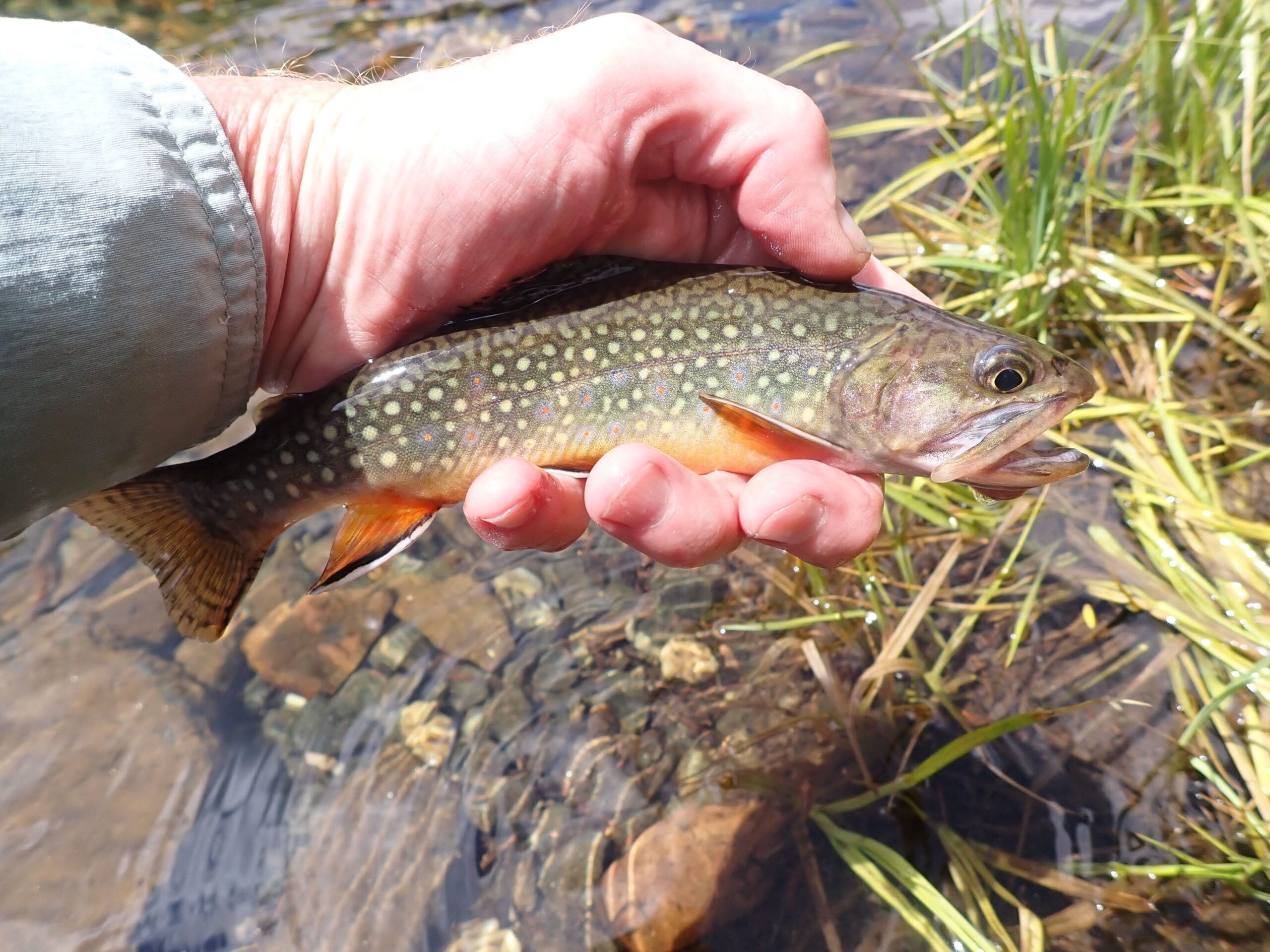 Number One
Number One Smooth
Smooth Brilliant
Brilliant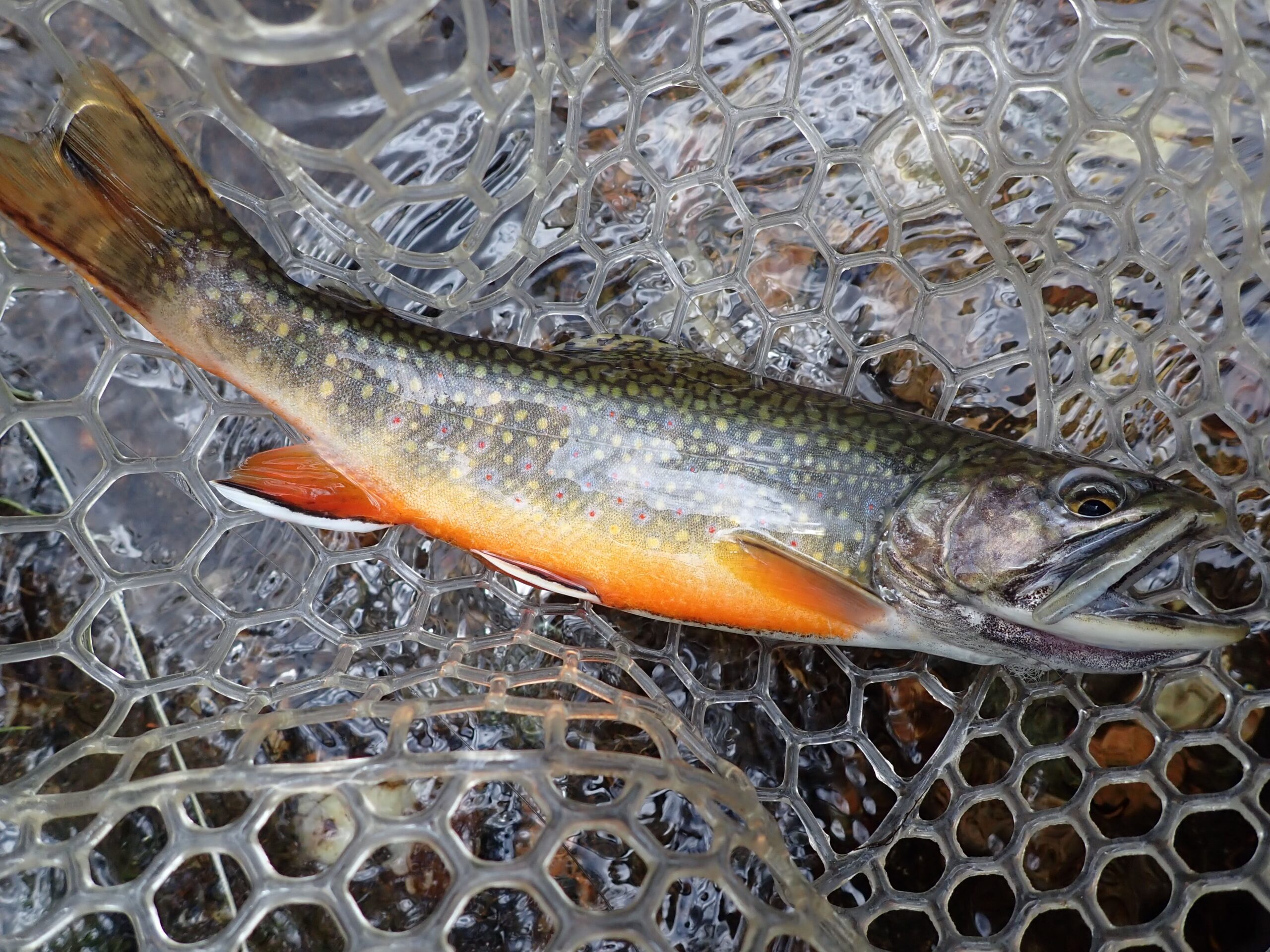 Very Dark Coloration
Very Dark Coloration Gorgeous Run
Gorgeous Run One More Gem
One More Gem Clear and Moderate Flows
Clear and Moderate Flows Narrow Canyon
Narrow Canyon Recovered Wading Staff
Recovered Wading Staff Same Stream, Different Look
Same Stream, Different Look Best Fish of the Day
Best Fish of the Day Next to Grassy Clump Was Brown Trout Home
Next to Grassy Clump Was Brown Trout Home Camouflage
Camouflage Competing Angler
Competing Angler Start of Lower Gradient Section
Start of Lower Gradient Section Greedy Brook Trout Were Prevalent
Greedy Brook Trout Were Prevalent Undercut Bank Produced a Gorgeous Brown Trout
Undercut Bank Produced a Gorgeous Brown Trout Undercut Bank Brown Trout
Undercut Bank Brown Trout Very Pretty and Very Productive Pool
Very Pretty and Very Productive Pool Loved These Occasional Brown Trout
Loved These Occasional Brown Trout Another Respectable Small Stream Brown Trout
Another Respectable Small Stream Brown Trout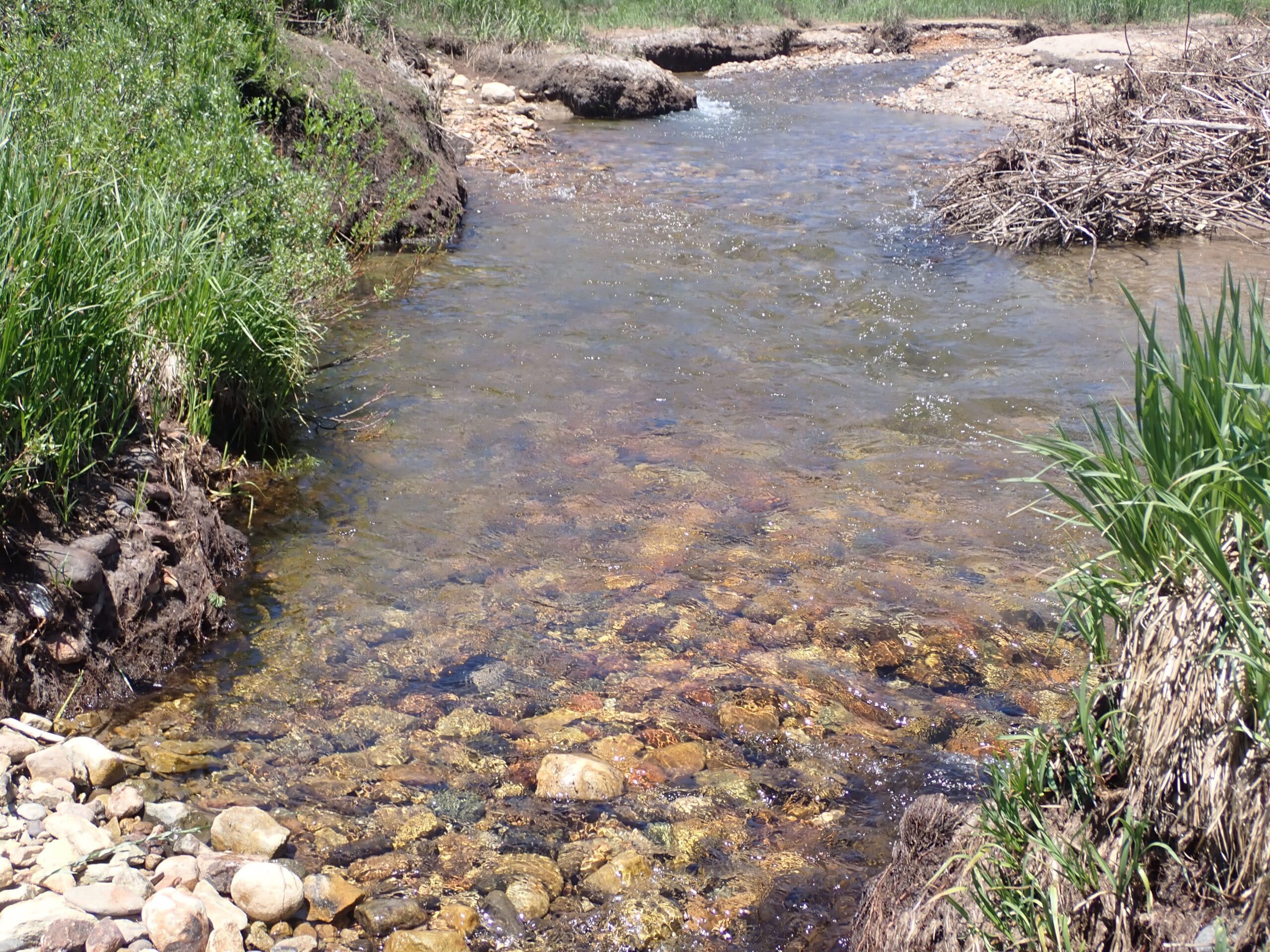 Shelf Pool Produced
Shelf Pool Produced Resting Brook Trout
Resting Brook Trout Aggressive Brown Trout
Aggressive Brown Trout Brook Trout Haven
Brook Trout Haven Hornsilver Camping Setup
Hornsilver Camping Setup Frost on the Tablecloth
Frost on the Tablecloth Flows Remained High on Tuesday
Flows Remained High on Tuesday Early Catch
Early Catch Talon Scarred Rainbow Trout
Talon Scarred Rainbow Trout New Location, Nice Brown Trout
New Location, Nice Brown Trout Pockets Galore
Pockets Galore Surprise Catch
Surprise Catch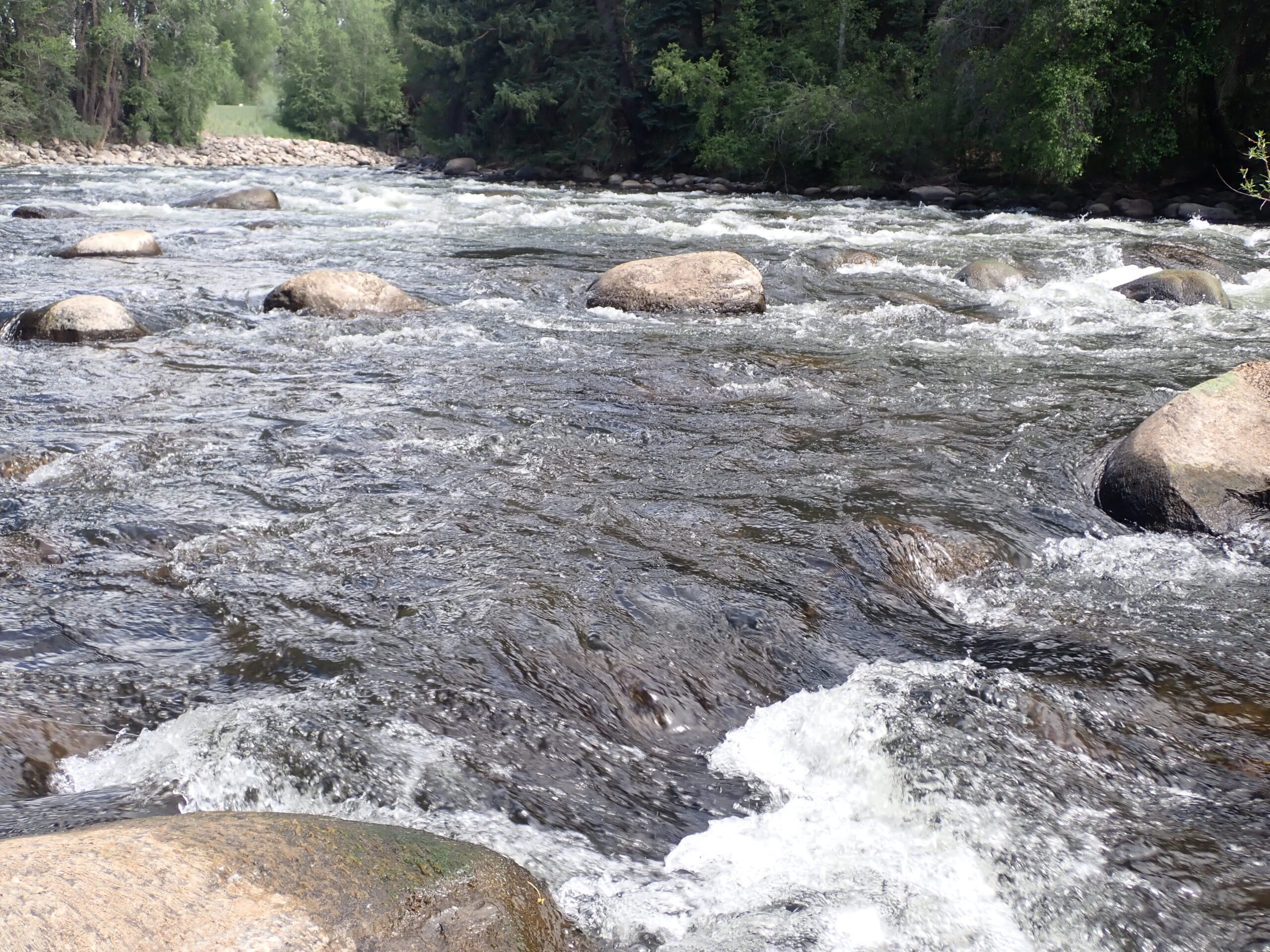 Between Middle of Three Exposed Rocks and Rock on Far Right
Between Middle of Three Exposed Rocks and Rock on Far Right Required a Fly Change
Required a Fly Change Deep Slot
Deep Slot Bravo
Bravo Large Deep Pocket
Large Deep Pocket Starting Point
Starting Point 700 – 800 CFS
700 – 800 CFS Early Catch
Early Catch Submerged Willows
Submerged Willows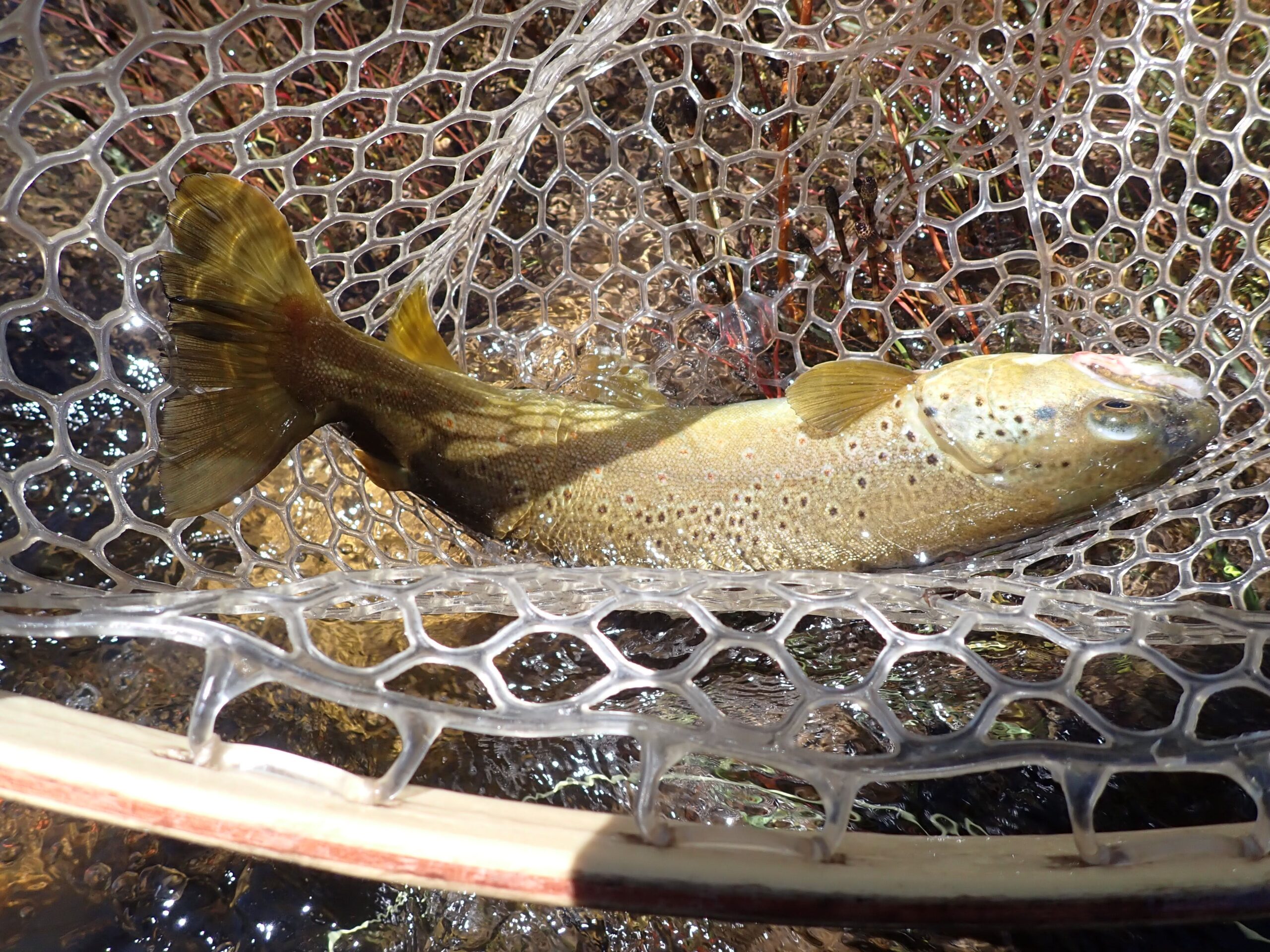 Much Appreciated Brown Trout
Much Appreciated Brown Trout Fighting Bow
Fighting Bow Deep Trough
Deep Trough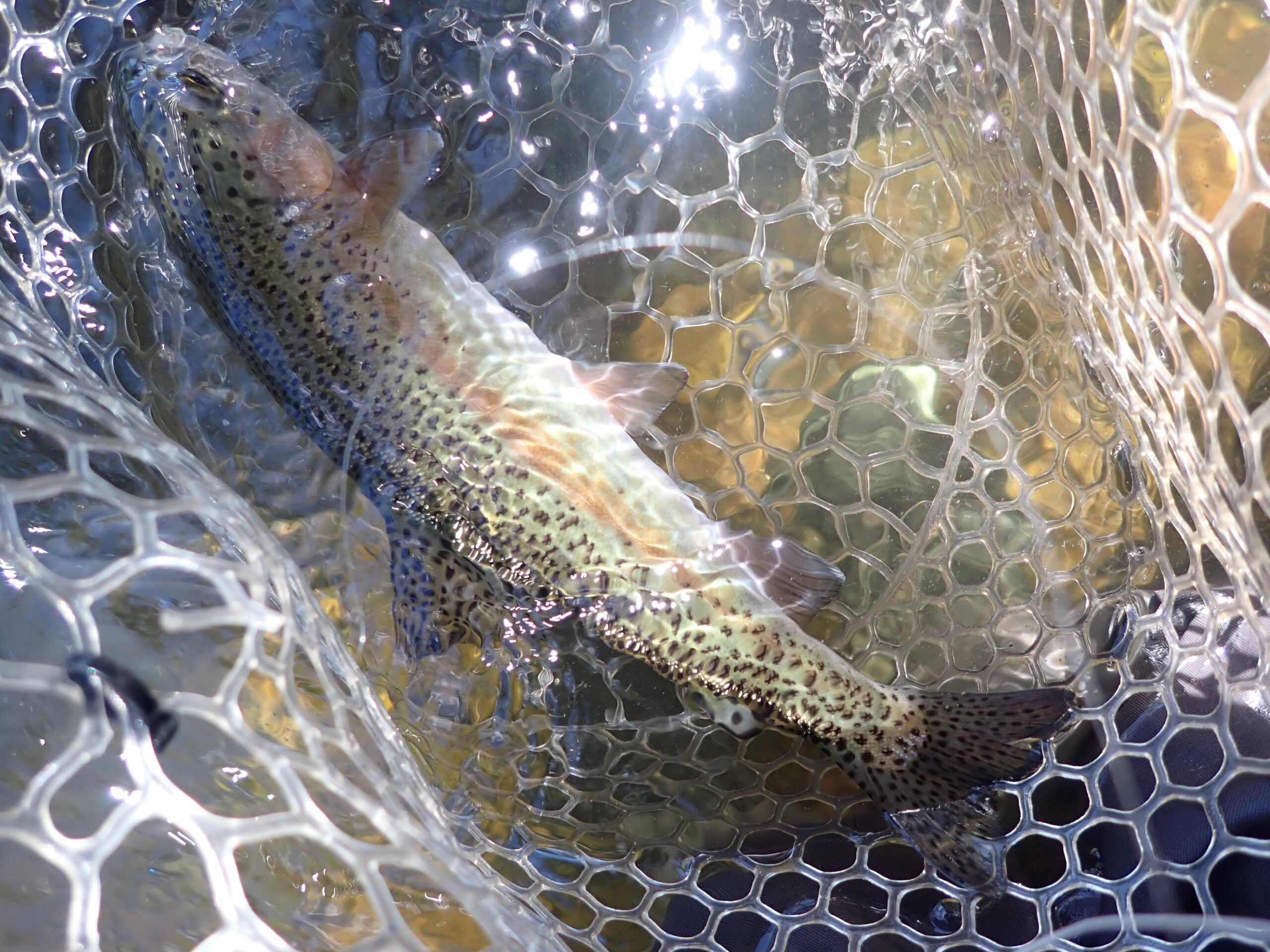 Pink Stripe
Pink Stripe Talon Wound Obvious
Talon Wound Obvious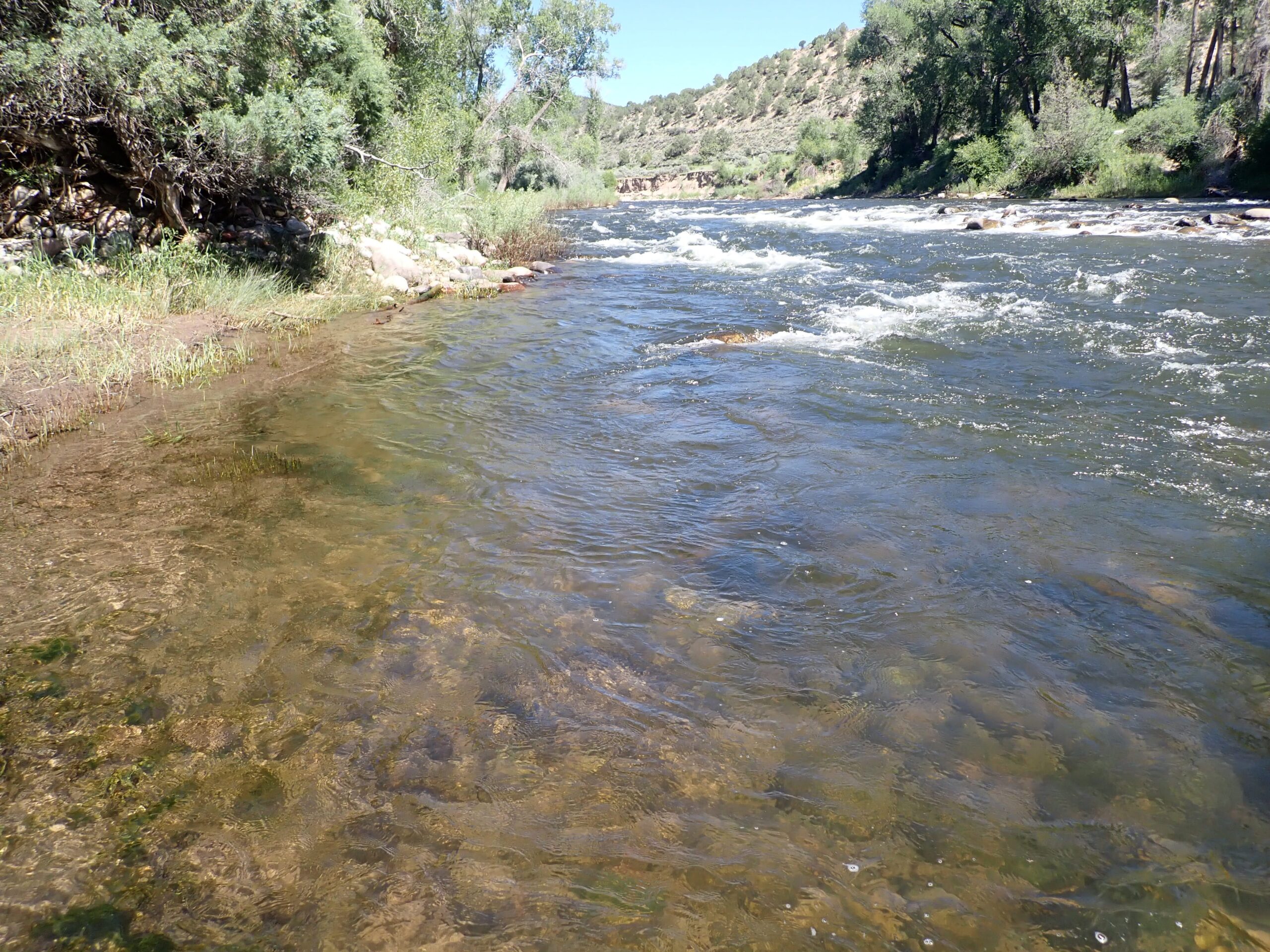 Home of Talon Wound Rainbow
Home of Talon Wound Rainbow Home of Comparadun Sipper
Home of Comparadun Sipper Fish of the Day
Fish of the Day
 Near the Start
Near the Start Another Orange Belly
Another Orange Belly Placid at the Moment
Placid at the Moment Orange Fins
Orange Fins One of the Better Fish of the Day
One of the Better Fish of the Day Darker Body on This Prize
Darker Body on This Prize A Different Pond
A Different Pond I Love the Overhead View
I Love the Overhead View First Pond Fished
First Pond Fished Brilliant Orange Belly
Brilliant Orange Belly Circling Around
Circling Around Such Color
Such Color Stretched Out
Stretched Out Vivid Colors on This One
Vivid Colors on This One Around the Corner
Around the Corner Gentle Grip
Gentle Grip Another Pond
Another Pond Last and Perhaps Best
Last and Perhaps Best High and Tinged with Color
High and Tinged with Color Early Catch
Early Catch What I Fish For
What I Fish For Very Nice Section
Very Nice Section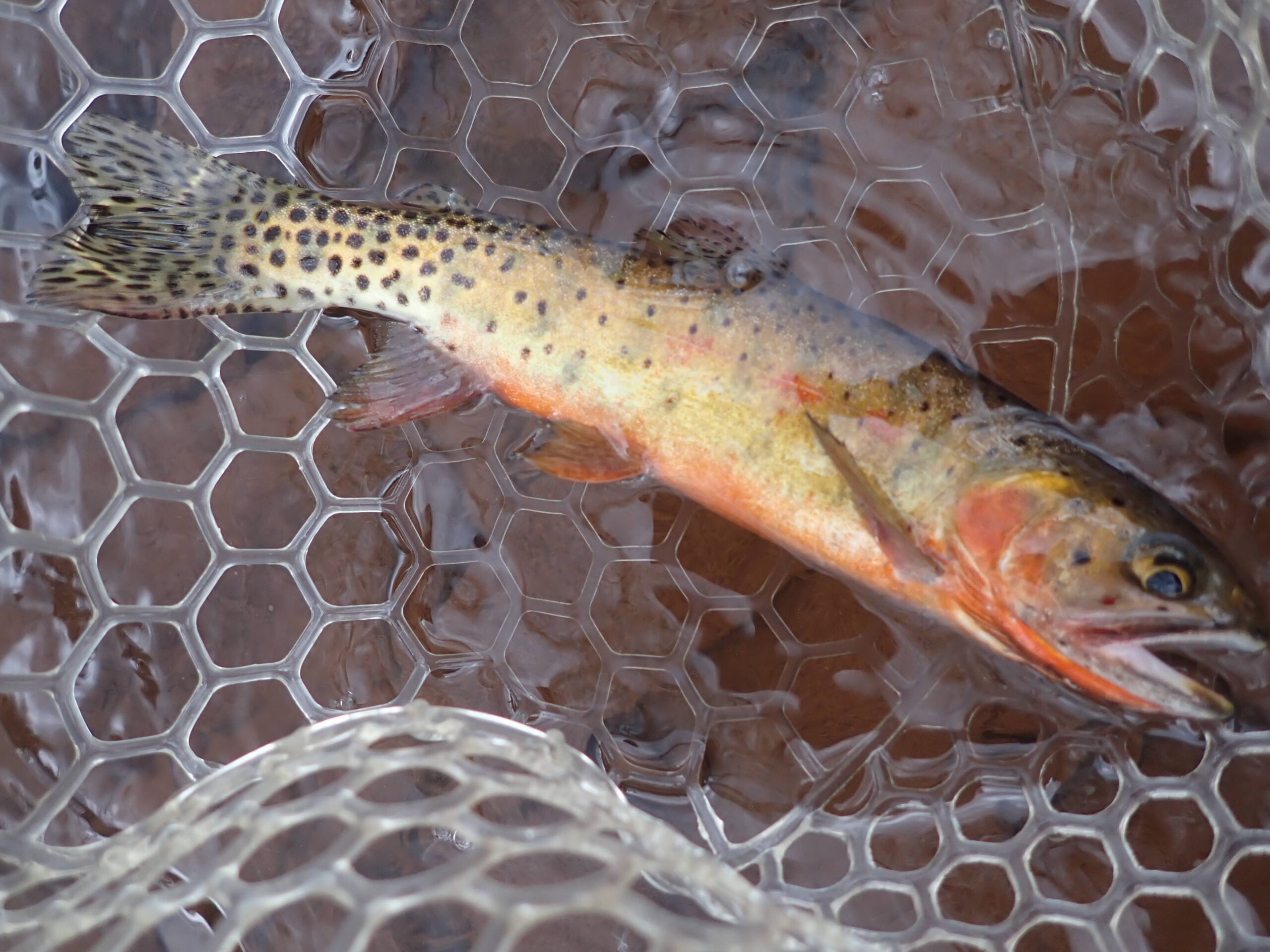 Flaming Colors
Flaming Colors A Bit of Depth on the Left
A Bit of Depth on the Left Narrow Meadow Stream
Narrow Meadow Stream Jewel of a Trout
Jewel of a Trout One of the Better Spots
One of the Better Spots Chernobyl Ant Drew Interest But No Takes
Chernobyl Ant Drew Interest But No Takes Tail of a Pond
Tail of a Pond Colorful
Colorful Magnificent
Magnificent Wind and Waves
Wind and Waves Pretty Handful
Pretty Handful